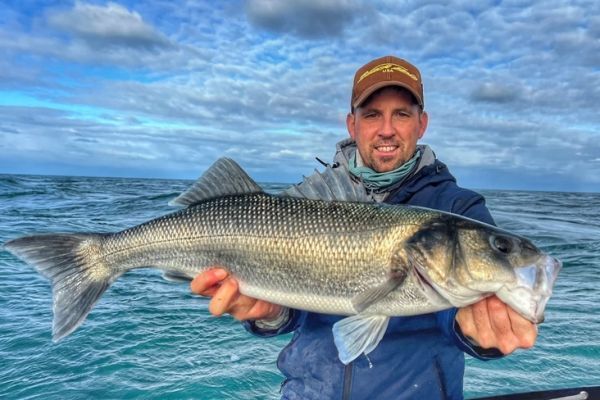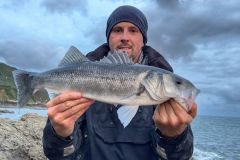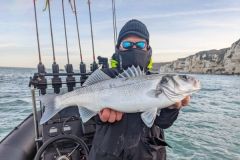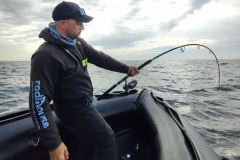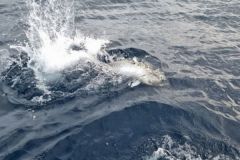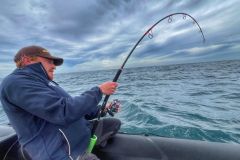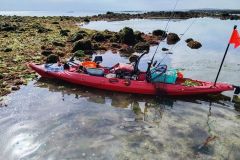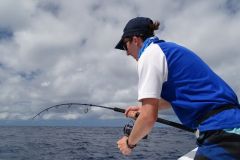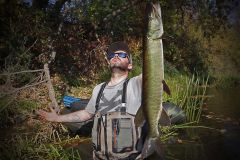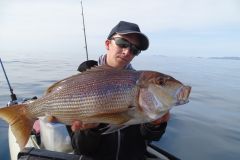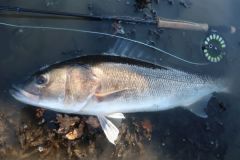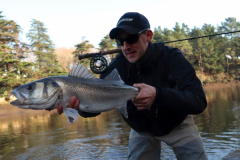On paper, the conditions were optimal
The Cotentin is renowned for its strong currents, with the Raz Blanchard to the west, one of the most powerful in Europe, and the Raz de Barfleur to the east. In spring-tide conditions, it's not uncommon to see currents in excess of seven or eight knots. Fishing in such conditions is anything but straightforward.
I'm thinking of going back to an area that last year at this time gave me some great outings, in conditions more or less the same as today.
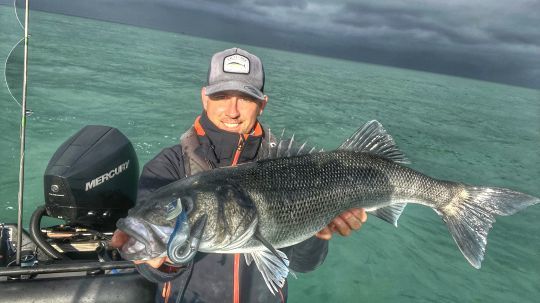
That day, the weather window was short: just enough time for one morning. Luckily, I found myself with the wind and current in the same direction, which calmed the sea state a little.
With a coefficient of 70, I knew the current would be strong. But to specifically target big fish in an area I know relatively well, experience has taught me that a strong current is often necessary.
8:30 am: Departure from the port, heading for the first fishing spot.

How do you fish in such a current?
This is one of the main difficulties: managing to fish properly in an area of between 15 and 20 metres with a very strong current. Traction fishing, away from the boat, becomes very complicated in these conditions. It's virtually impossible to hold the bottom and fish effectively.
So I opt for the vertical technique, slightly offset from the boat.
In this way, I limit the amount of line out and it's easier for me to control my lure. I keep a close eye on the sounder to anticipate depth variations and keep my lure as close to the bottom as possible.
Given the speed of the current, the animation is very minimalist. I don't reel: I simply lift my lure a few centimetres, then let it float gently until it returns to the bottom.
On these spots with very strong currents, the fish are posted, lurking behind rocks, scanning all the prey carried by the flow. As soon as a prey item passes close by, they emerge from their hiding place to seize it before returning to shelter.

Fishing tackle of the day
As you can see, it's essential to use heavily-weighted lures in such an area. I opt for lead heads weighing between 60 and 90 grams, which allows me to hold the bottom properly.
As is so often the case when the weather is overcast and the water slightly tinted, the khaki Black Minnow is my favorite lure. Its Texan mounting greatly reduces the risk of snags on the bottom, and with such a fast drift, this is essential.
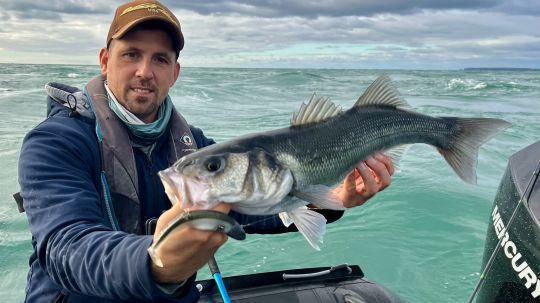
As I fish vertically or slightly offset from the boat, I chose a rod a little shorter than usual: Rodhouse's NFC MB 739 IM.
A powerful, highly resonant blank, perfectly suited to fishing in such conditions.
A day of beautiful fish
The day lived up to all its promises. Some very nice fish, offering sporting battles in this strong current.
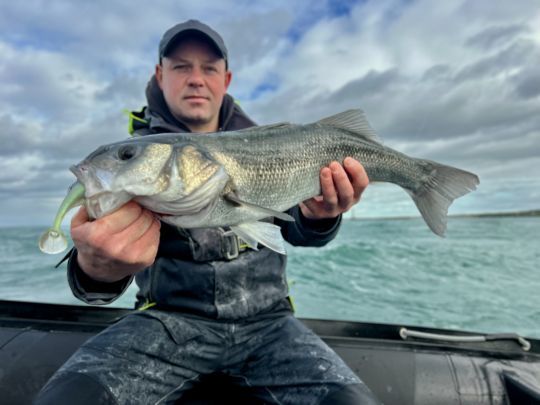
The drifts followed one another over a fairly small area. To limit the impact of the catches as much as possible, I regularly changed spot before returning to this famous area where all the big fish seemed to be confined.
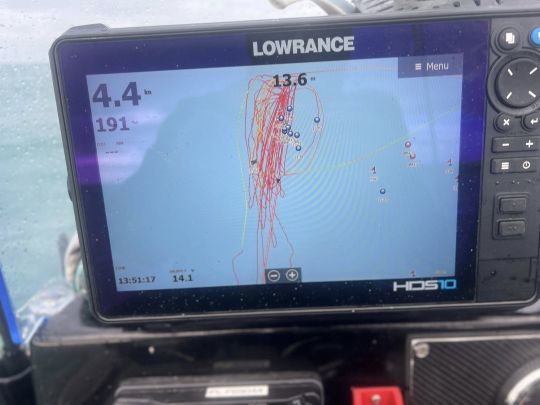
Back in port at around 2pm, this outing enabled us to put some twenty sea bass out to dry, some of them very large.
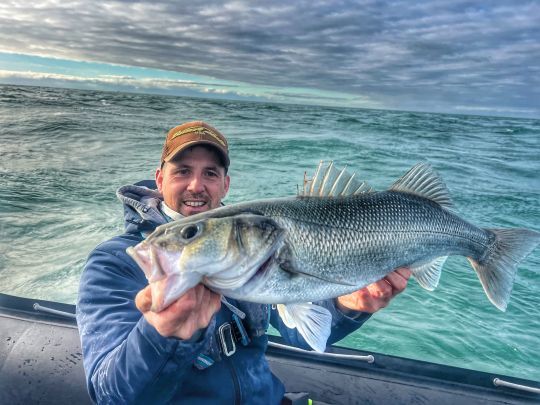
Of course, I'm still in the starting-blocks to seize the slightest weather window, but it doesn't look like that's going to happen any time soon.

 /
/ 